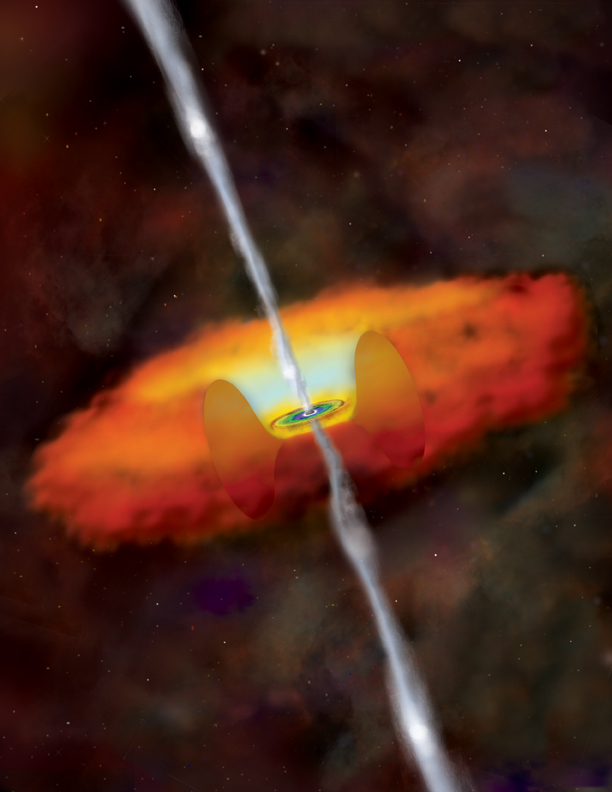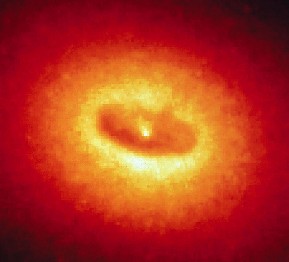
|
There is much evidence that quasars begin life enshrouded in a dusty
cocoon, where they lie hidden from optical surveys. In collaboration
with M. Lacy (SIRTF), R. Becker (UCD), D. Helfand (Columbia), and
R. White, (STScI), I am using the 2 Micron All-Sky Survey (2MASS) in
conjunction with the FIRST Survey and optical catalogs to select
optically faint, infrared bright quasar candidates for optical and
infrared spectroscopy and imaging follow-up at Keck and the NASA
InfraRed Telescope Facility (IRTF). We have now discovered several
dozen extremely red, probably very dusty, quasars at redshifts 0.5 to
2.6. Assessing the population of these objects is
critical for understanding the general quasar phenomenon because their
numbers relative to the standard blue quasars constrain the lifetime
of the dusty phase. Click here to see color-magnitude comparisons of
the K-band selected red quasars with normal FIRST survey quasars
selected in the optical.
|


